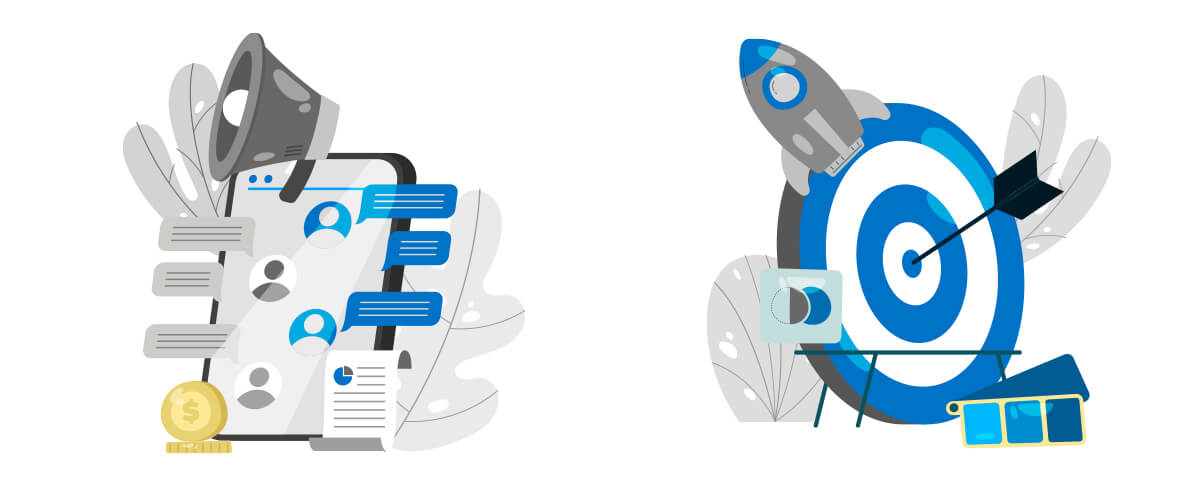Understanding the Key Differences Between Branding and Marketing
The words “branding” and “marketing” frequently appear in business discussions. Although they may seem similar, they represent incredible aspects of a company’s strategy. The focus of this post will be on how branding and marketing are different from one another and how each helps a business grow.
1. Definition and Focus:
Branding: Branding creates a fantastic identity for an organization, a good, or a service. It includes narrative, principles, sentiments, and aesthetic components like colors and logos. Establishing a strong and lasting presence in consumers’ minds is the aim of branding.
Marketing: Marketing refers to the procedures and strategies employed to advertise goods and services. It includes topics like consumer interaction, public relations, advertising, and market research. The goal is to demonstrate how much certain services cost while also generating interest, leads, and sales.
2. Tactical vs. Long-time period Approach:
Branding: Branding is a long-term investment aimed at fostering trust and adherence. By establishing the identity and positioning of the emblem, it serves as the framework for promotional efforts.
Marketing: Marketing focuses on short-term goals like increased sales or website traffic and is more immediate. According to promotions, advancements, or new items, strategies change.
3. Emotional Connection vs. Promotion:
Branding: Building a stronger emotional connection with customers through branding. It aims to produce ideas and institutions that connect with the market represented by the logo.
Marketing: The roles of marketing are merchandising and persuasion. It clarifies the qualities and benefits of the services and goods. Strategies change to accommodate shifting consumer tastes and trends.
4. Core Identity vs. Communication:
Branding: A company’s logo serves as its primary means of identification. It creates a distinct public image that sets it apart from rivals both visually and philosophically.
Marketing: Marketing spreads a company’s brand throughout the market. It uses a variety of platforms and techniques to spread information about its goods, services, and promotions.
5. Long-term Value vs. Swift Outcomes:
Branding: Strong branding results in long-term value. It can withstand market swings and maintain consistent customer bases even at times when times are tough.
Marketing: Marketing seeks immediate results and frequently links them to short-term desires. Based on market conditions, consumer trends, and specific business objectives, strategies fluctuate.
6. Integration of a Holistic Strategy:
Branding: As a strategic compass, branding integrates multiple aspects to generate a coherent brand statement that resonates across all touchpoints. It contains the brand’s ethos, beliefs, and promises, promoting consistency in consumer encounters.
Marketing: Marketing brings the brand’s identity into every campaign, advertisement, and consumer interaction by weaving the brand narrative into tactical execution. It guarantees that all communications are consistent with the core of the brand.
7. Longevity vs. Immediate Engagement:
Branding: With prioritizing emotional resonance and long-term connections, branding fosters brand loyalty through time. It cultivates clients who remain loyal not just because of the products, but also because of the shared values and emotions that the brand expresses.
Marketing: Marketing, which is geared toward fast engagement, pushes quick actions such as a purchase or sign-up. It takes use of current trends and customer demands to elicit immediate responses.
8. Cultural Impact and Evolution:
Branding: Over time, branding can permeate cultural consciousness, becoming a symbol representing certain values or lifestyles. It evolves more gradually, often reflecting societal shifts and changes.
Marketing: Adapting rapidly to the cultural zeitgeist, marketing seizes timely opportunities. It reflects the ‘now’ by tailoring strategies to the prevailing cultural trends, fostering immediate relevance.
Including “Web Design” and “Social Media Marketing“:
Social Media Marketing: Using branding to humanize the brand on social media platforms engages users on a personal level.
Web Design: Web design ensures consistency and user friendliness by translating brand graphics into a unified online experience.









